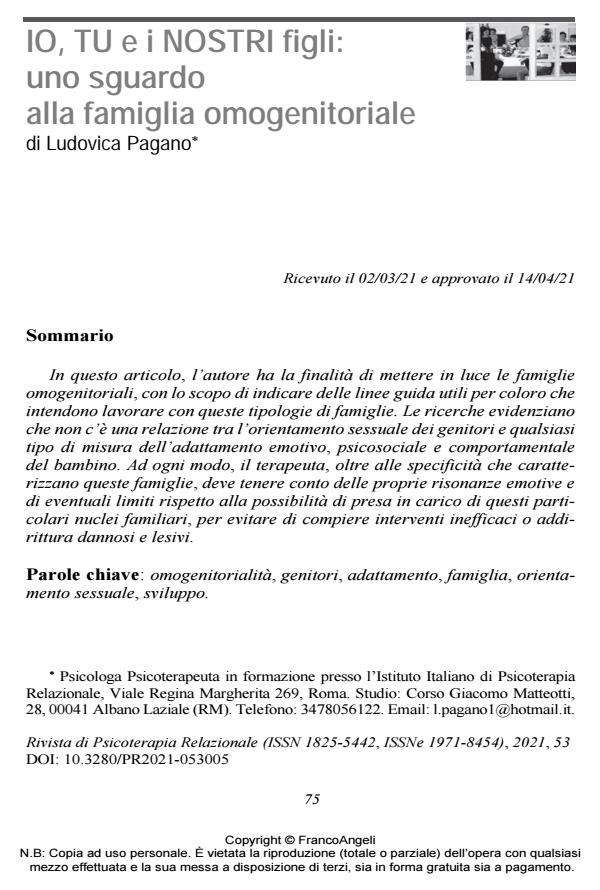IO, TU e i NOSTRI figli: uno sguardo alla famiglia omogenitoriale
Titolo Rivista RIVISTA DI PSICOTERAPIA RELAZIONALE
Autori/Curatori Ludovica Pagano
Anno di pubblicazione 2021 Fascicolo 2021/53
Lingua Italiano Numero pagine 21 P. 75-95 Dimensione file 233 KB
DOI 10.3280/PR2021-053005
Il DOI è il codice a barre della proprietà intellettuale: per saperne di più
clicca qui
Qui sotto puoi vedere in anteprima la prima pagina di questo articolo.
Se questo articolo ti interessa, lo puoi acquistare (e scaricare in formato pdf) seguendo le facili indicazioni per acquistare il download credit. Acquista Download Credits per scaricare questo Articolo in formato PDF

FrancoAngeli è membro della Publishers International Linking Association, Inc (PILA)associazione indipendente e non profit per facilitare (attraverso i servizi tecnologici implementati da CrossRef.org) l’accesso degli studiosi ai contenuti digitali nelle pubblicazioni professionali e scientifiche
In questo articolo, l’autore ha la finalità di mettere in luce le fami-glie omogenitoriali, con lo scopo di indicare delle linee guida utili per coloro che intendono lavorare con queste tipologie di famiglie. Le ricerche evidenziano che non c’è una relazione tra l’orientamento sessuale dei genitori e qualsiasi tipo di misura dell’adattamento emotivo, psicosociale e comportamentale del bambino. Ad ogni modo, il terapeuta, oltre alle specificità che caratterizzano queste famiglie, deve tenere conto delle proprie risonanze emotive e di eventuali limiti rispetto alla possibilità di presa in carico di questi particolari nuclei familiari, per evitare di compiere interventi inefficaci o addirittura dannosi e lesivi.
Parole chiave:omogenitorialità, genitori, adattamento, famiglia, orientamento sessuale, sviluppo.
- Le sfide della psicoterapia di coppia e familiare alla luce delle nuove configurazioni di famiglie Carlo de la Ville sur Illon, Alba Saddi, in RIVISTA DI PSICOTERAPIA RELAZIONALE 61/2025 pp.27
DOI: 10.3280/PR2025-061002
Ludovica Pagano, IO, TU e i NOSTRI figli: uno sguardo alla famiglia omogenitoriale in "RIVISTA DI PSICOTERAPIA RELAZIONALE " 53/2021, pp 75-95, DOI: 10.3280/PR2021-053005